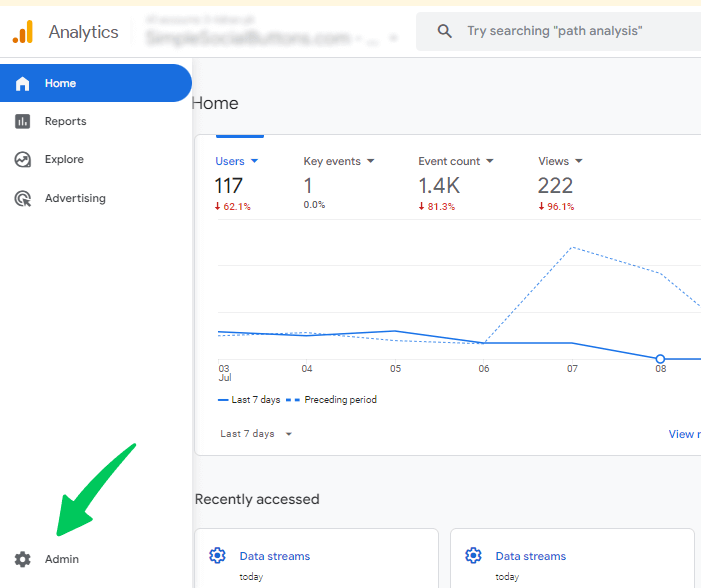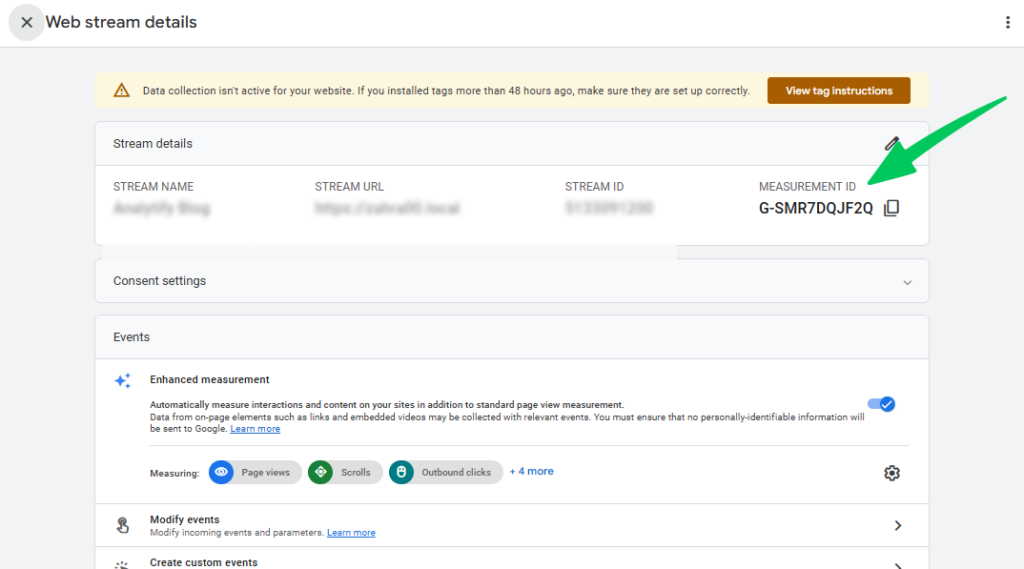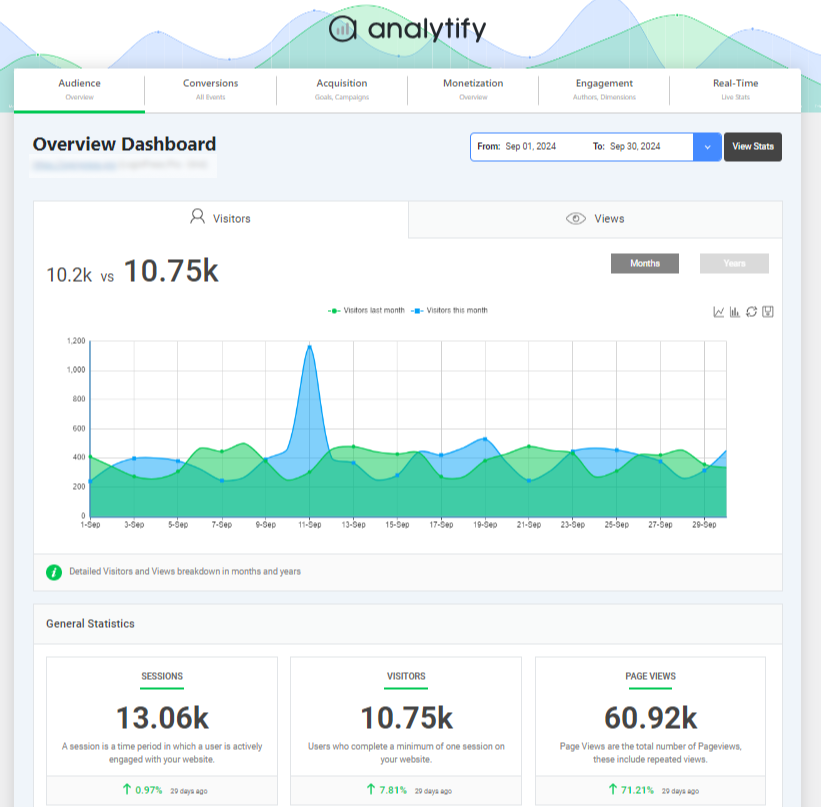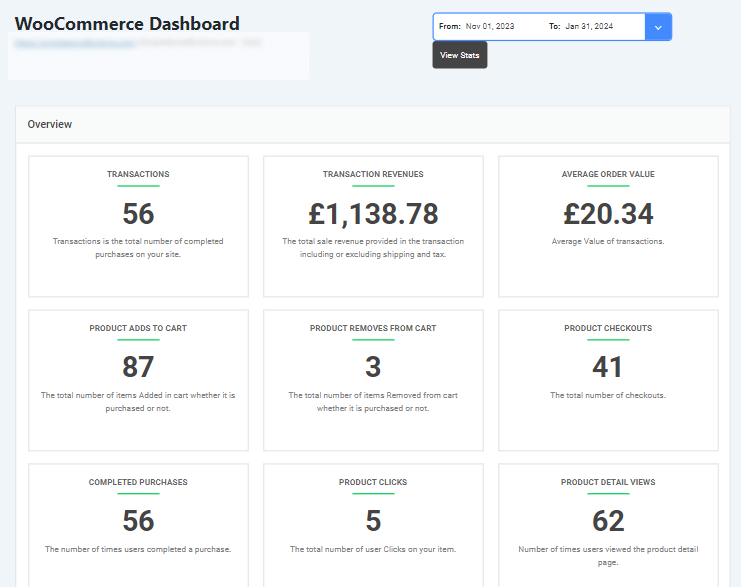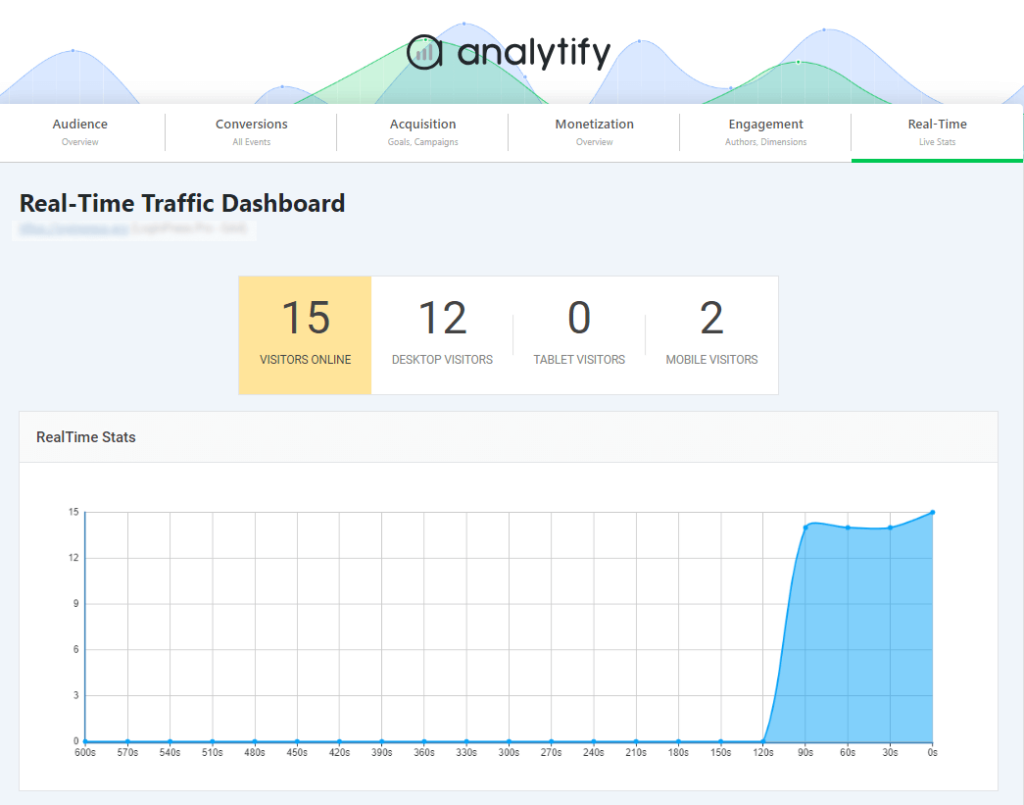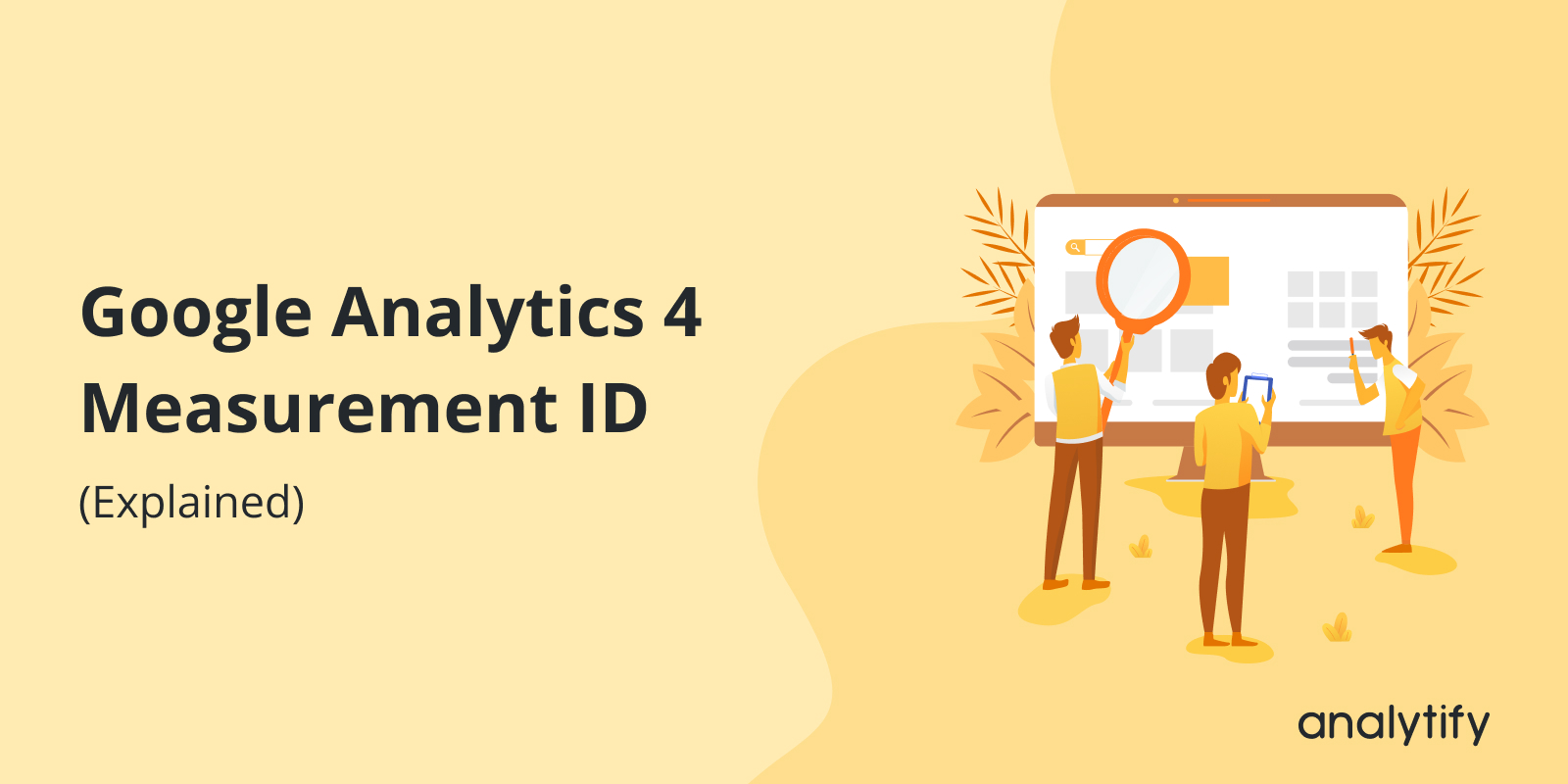
Google Analytics 4 Measurement ID (Explained)
Google Analytics 4 Measurement ID is a unique code that connects your website or app to Google Analytics 4 (GA4). It allows GA4 to collect data about how users interact with your site. This data is then used to give you insights into user behavior, traffic sources, and other valuable metrics.
If you used Universal Analytics before, you might remember the tracking ID that linked your site to Google Analytics. In GA4, this ID has changed. Now, the Measurement ID plays that role. It is formatted like this: G-XXXXXXXXXX, where each “X” is a letter or number unique to your property.
In this article, we’ll learn about the Google Analytics 4 Measurement ID, where to find it, and how it powers accurate tracking in GA4.
Google Analytics 4 Measurement ID (TOC)
What is the GA4 Measurement ID?
The GA4 Measurement ID also known as the tracking ID is a unique identifier for each Google Analytics 4 property. Think of it as the bridge between your website (or app). Google Analytics Measurement ID in Google Analytics tells exactly where to pull data from, ensuring all information from your site or app reaches the correct analytics property.
Each Measurement ID is different, which helps GA4 keep track of data from many sites and apps without confusion. This ID is important for gathering accurate data, so make sure it’s set up correctly on your site.
You can recognize it by its format: G-XXXXXXXXXX (with a mix of letters and numbers).
Why is the Measurement ID Important?
The GA4 Measurement ID is essential for accurate data tracking in Google Analytics 4. Here are a few reasons why it matters:
- Data Collection: The Measurement ID connects your website or app to Google Analytics, allowing GA4 to collect data from each visit and interaction.
- User Tracking: It helps track user behavior across different devices, giving a complete view of how visitors interact with your site or app.
- Accurate Reporting: By assigning a unique ID to each data stream, the Measurement ID ensures that data is organized correctly in GA4, making reports reliable and precise.
- Multiple Data Streams: For businesses with different platforms (e.g., website, mobile app), the Measurement ID lets them track each platform separately while keeping the data within one GA4 property.
Where to Find Google Measurement ID?
Finding your GA4 Measurement ID is simple. Follow these easy steps:
- Log into Google Analytics: Start by signing into your Google Analytics account.
- Select Your GA4 Property: On the home screen, choose the property you want to find the Measurement ID for.
- Go to Admin Settings: In the bottom left corner, click on Admin. It will open the settings for your account.
- Navigate to Data Streams: Under the Property column, click on Data Streams. This is where Google Analytics keeps track of data sources.
- Open Your Data Stream: Choose the data stream connected to your website or app. You’ll see various details about your data source when you open it.
- Find Your Measurement ID: At the top of the data stream details, you’ll see the Measurement ID, formatted as G-XXXXXXXXXX.
Following these steps will help you locate your Measurement ID quickly. This ID is essential for setting up tracking, so make sure to copy it correctly for later use.
How to Use the GA4 Measurement ID?
Once you’ve found your GA4 Measurement ID, you can start using it to track data from your website or app. Here are the main ways to implement it:
- Direct Integration for Developers
- Copy your GA4 Measurement ID.
- Insert it into the tracking code provided by Google Analytics.
- Place the tracking code within the <head> section of your website’s HTML.
- This will start sending data directly from your site to Google Analytics.
- Using Google Tag Manager (GTM)
- Open your Google Tag Manager account.
- Create a new “GA4 Configuration” tag.
- Paste your Measurement ID into the tag’s settings.
- Set up triggers for the tag to control when it fires (e.g., on all pages or specific events).
- Publish your changes. GTM will now manage your GA4 tracking.
3. Use Enhanced Measurement (for simplified tracking)
Google Analytics 4 offers a powerful feature called Enhanced Measurement that automatically tracks a range of user interactions (after you integrate your website with Google Analytics).
This can be a great starting point, especially if you’re not a developer.
- Enable Enhanced Measurement: Within your GA4 property settings, navigate to the “Data Streams” section and enable Enhanced Measurement.
- Explore tracked events: Enhanced Measurement automatically captures data on page views, scrolls, outbound clicks, site search, video engagement, and file downloads. Learn more about Enhanced Measurement in GA4.
- Customize as needed: You can customize Enhanced Measurement settings to align with your specific tracking needs.
By setting up your GA4 Measurement ID, you enable Google Analytics to track visits, clicks, and other actions on your website or app.
Simplifying GA4 Tracking with Analytify for WordPress Users
For WordPress users, managing your GA4 Measurement ID can be even easier with Analytify. This plugin automatically connects your GA4 property to your WordPress site, removing the need to manually find, paste, or update your Measurement ID in the site code.
Analytify simplifies the tracking setup, making it especially convenient if you prefer to avoid handling code.
Join 50,000+ beginners & professionals who use Analytify to simplify their Google Analytics!
With Analytify, you’ll get accurate GA4 tracking and insights directly within WordPress. This approach allows you to focus on understanding your audience and refining your strategy without the technical steps, making it an ideal solution for seamless GA4 integration.
Key Features of Analytify
- Easy GA4 Setup: Analytify simplifies the process of connecting your WordPress site to Google Analytics 4, eliminating the need for manual code adjustments.
- In-Depth Analytics Reports: Access detailed reports on website traffic, user behavior, and content performance directly within your WordPress dashboard.
- Enhanced Ecommerce Tracking: Track sales, revenue, and conversions from your WooCommerce store with enhanced ecommerce tracking capabilities.
- Real-Time Stats: Monitor website traffic and user activity in real-time to gain immediate insights into audience engagement.
- Customizable Dashboards: Create personalized dashboards to track the metrics that matter most to your business goals.
By using Analytify, WordPress users can streamline their GA4 integration, access comprehensive analytics data, and make data-driven decisions without the complexities of manual tracking setup.
Differences Between GA4 Measurement ID and Property ID
It’s essential to understand the difference between the GA4 Measurement ID and the Property ID, as each serves a unique purpose in Google Analytics 4:
1. Measurement ID
- The Measurement ID links a specific data stream (like your website or app) to Google Analytics.
- It’s used in tracking codes to tell GA4 which data stream the information is coming from.
- Each data stream has its own Measurement ID, starting with “G-.”
2. Property ID
- The Property ID identifies your GA4 property as a whole.
- It’s a broader identifier that groups together all data streams, making it useful for managing multiple data sources under one GA4 account.
- Unlike the Measurement ID, the Property ID is not used in tracking code but is visible in your GA4 settings for organizational purposes.
You can see the property ID by navigating to GA4 Admin >> Property >> Property Details.
In the ‘Property’ column (the middle column), select the property you want to view.
Directly in front of the property name, you’ll see the Property ID. It’s a series of numbers, typically about 10 digits long.
GA4 Measurement ID Common Issues and Troubleshooting
Setting up the GA4 Measurement ID can sometimes lead to minor issues. Here are common problems and how to fix them:
- Incorrect Measurement ID Entry
- One of the most common mistakes is typing the Measurement ID incorrectly. Even a single wrong character can stop tracking.
- Solution: Double-check your Measurement ID in GA4 and ensure it matches what’s in your website or app settings.
- Tracking Blocked by Browser Extensions
- Some users have browser extensions or ad blockers that block tracking scripts, which may cause missing data.
- Solution: Use tools like Google Tag Assistant or GA Debugger to test if the Measurement ID is tracking correctly on your end.
- Delayed Data in Reports
- GA4 sometimes takes time to process and display data, causing temporary gaps or report delays.
- Solution: Wait a few hours and refresh your reports to see if the data appears. GA4 can take up to 24 hours to update certain data.
- Issues with Google Tag Manager (GTM) Configuration
- If the tag triggers incorrectly or isn’t set to fire on all pages, you might not capture all user data.
- Solution: Check GTM settings to ensure your GA4 tag is configured correctly, with the right triggers and Measurement ID.
- Testing the Setup
- After setting up your Measurement ID, it’s a good idea to test if everything works.
- Solution: Use Real-Time Reports in GA4 to confirm that your setup tracks user activity immediately.
By identifying these common issues and following these troubleshooting tips, you can ensure your GA4 Measurement ID setup is reliable and captures data accurately.
GA4 Measurement ID FAQs
1. What is the Google Analytics 4 Measurement ID?
The Google Analytics 4 (GA4) Measurement ID is a unique identifier for each data stream within a GA4 property. It tracks data from a specific website or app to GA4, ensuring accurate data collection and reporting.
2. Where can I find my Google Measurement ID?
To find your Google Measurement ID in GA4:
Log in to Google Analytics.
Go to the Admin section and select ‘Data Streams’ under your desired property.
Click on your data stream, and you’ll see the Measurement ID at the top-right corner of the data stream details page.
3. What’s the difference between the Measurement ID and Property ID in Google Analytics 4?
The Measurement ID links a specific data stream (like a website or app) to Google Analytics, while the Property ID identifies the entire GA4 property. The Measurement ID is used in tracking codes, whereas the Property ID is primarily for organizational use within Google Analytics.
4. Do I need to use the Measurement ID if I’m using Analytify on WordPress?
No, if you’re using Analytify for WordPress, you don’t need to enter or manage the Measurement ID manually. Analytify automatically connects your GA4 property to your WordPress site, simplifying the tracking process without needing to handle any code.
5. Can I track multiple websites or apps with one GA4 Measurement ID?
Each data stream in GA4 requires its own unique Measurement ID. If you have multiple websites or apps, you’ll need to set up separate data streams for each within the same GA4 property. It allows you to track each platform individually while keeping all data under one property.
Final Thoughts: Google Analytics 4 Measurement ID
The GA4 Measurement ID is the foundation of data tracking in Google Analytics 4. It connects your website or app to GA4, ensuring all user interactions are accurately recorded. By setting up the Measurement ID correctly, you see user behavior, traffic sources, and more, helping you make informed decisions.
We hope this article helped you find Google Analytics 4 measurement ID.
You may also want to know how to find a client ID in GA4.
Now, we’d love to hear how you used your measurement ID to start GA4 tracking. Share your thoughts in the comments below.


